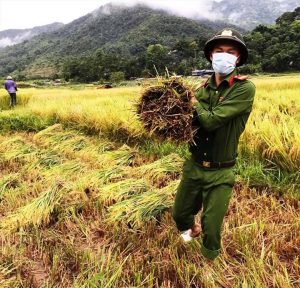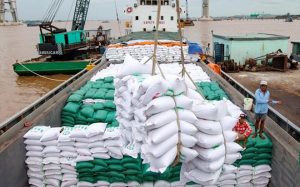
A series of disadvantages put competitive pressure on rice exports
The Vietnam Food Association, citing a Reuters source, said: Indonesia will suspend rice imports in 2021 because domestic inventories are enough to meet demand.
Information from gappingworld.com, adds that the national food purchasing agency Bulog (which is assigned the right to buy rice by Indonesia – PV) currently has 1.39 million tons of rice in stock, enough for stabilization policies. price for at least 12 months. Besides, Indonesia’s 2021 harvest is forecast to be higher than 2020, reaching 33 million tons. Bulog discharges rice stocks to the market when prices rise to control inflation.
The Philippines, which is Vietnam’s largest rice export market, has just implemented a policy of reducing rice import tax from 40-50% to 35%, making Vietnam’s rice export advantage over competitors reduced. By applying this tax rate, all rice exporting countries to the Philippines share the same tax rate of 35% – the preferential tax rate that Vietnam has enjoyed before.

“This tax reduction has created more advantages for India and Pakistan so that these countries can offer more competitive prices” – Mr. Nguyen Quoc Toan – Director of the Department of Agricultural Product Processing and Market Development (Ministry of Agriculture and Rural Development). Rural Development – Agriculture and Rural Development), said.
According to the list price list of the Vietnam Food Association, the export price of Indian rice has been adjusted down this week to “race” with the decrease of Vietnamese and Thai rice. Yesterday (July 7, 2021), Pakistan also reduced the export price of rice by 5 USD/ton for both 5% broken and 25% broken rice, sold at 393 and 343 USD/ton respectively.
The same day, Thailand also reduced the export price of rice by $2/ton for 5% broken rice and $3/ton for 25% broken rice.
From the beginning of the year until now, the export price of Vietnam’s rice has also been continuously adjusted down several times, the total decrease of about 15%.
On July 8, the price of Vietnam’s 5% broken rice was offered for sale on the international market at $468/ton; 25% broken rice is offered for sale at $448/ton. However, Vietnam’s rice prices are still among the highest. In the current context, high rice prices are detrimental to rice exports of domestic enterprises.

Opening a way out by exporting high-grade rice
According to the Department of Agricultural Product Processing and Market Development, in the first 6 months of 2021, Vietnam’s rice exports reached nearly 3 million tons, worth 1.64 billion USD, down 14.8% in volume and down 4.2%. 7% in value over the same period in 2020. According to statistics from the General Department of Customs, Vietnam’s rice exports in May 2021 decreased again after 2 consecutive months of increase.
Exports decreased in almost all rice varieties, but in contrast, exports of ST24 and ST25 rice increased by 8 times compared to the previous year.
“ST24 rice is mainly exported to China, and ST25 rice is mainly exported to the US,” said Mr. Nguyen Quoc Toan, director of the Department of Agricultural Product Processing and Market Development.
Entrepreneur Pham Thai Binh – “rice export king” also affirmed: I have long mentioned the issue of exporting high-grade rice because this is Vietnam’s advantage. Vietnam needs to focus on exporting high-quality rice because the US and European markets don’t care about price, but focus on quality, food safety, and pesticide residues within allowable limits.
Source: Laodong.vn
